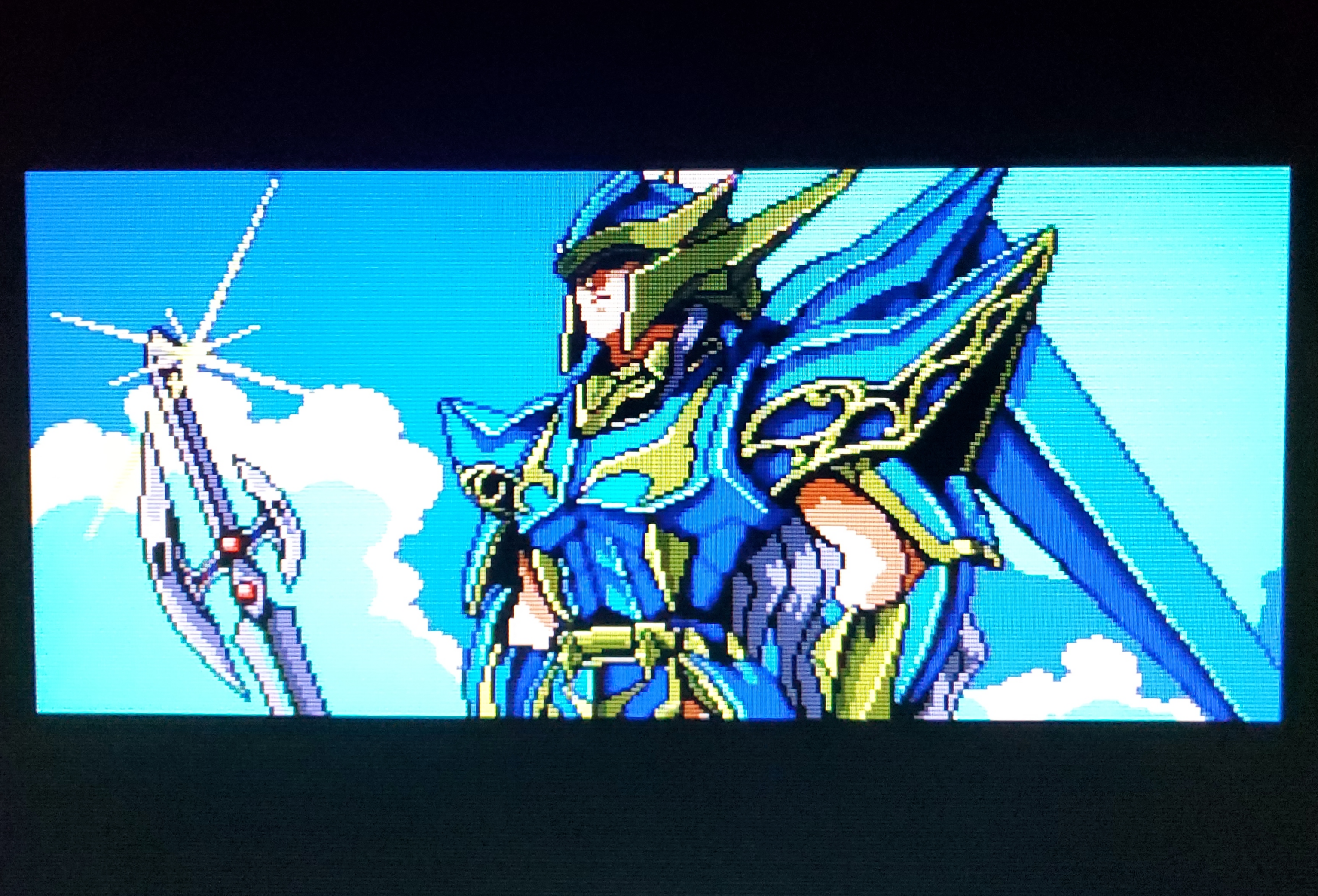
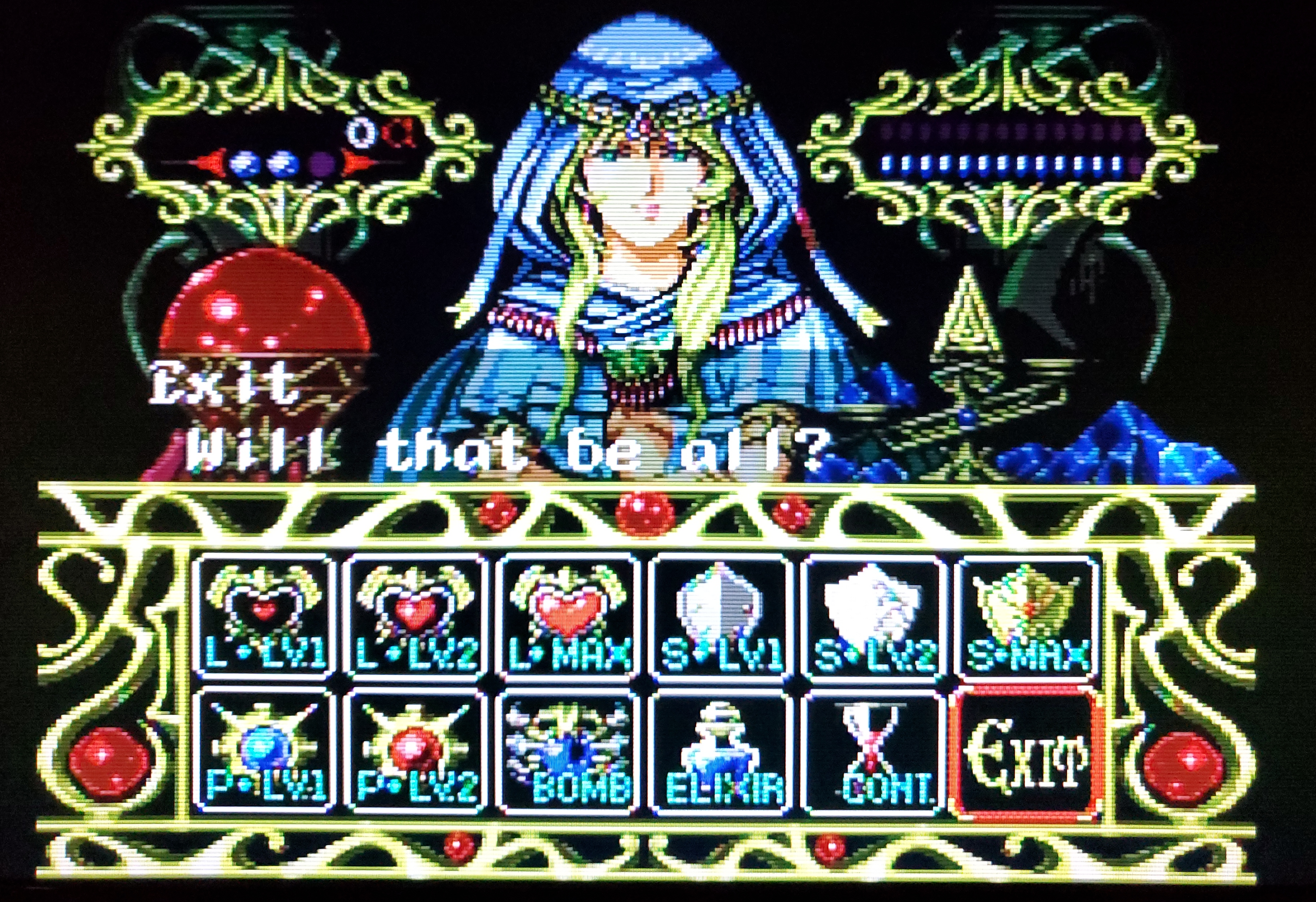
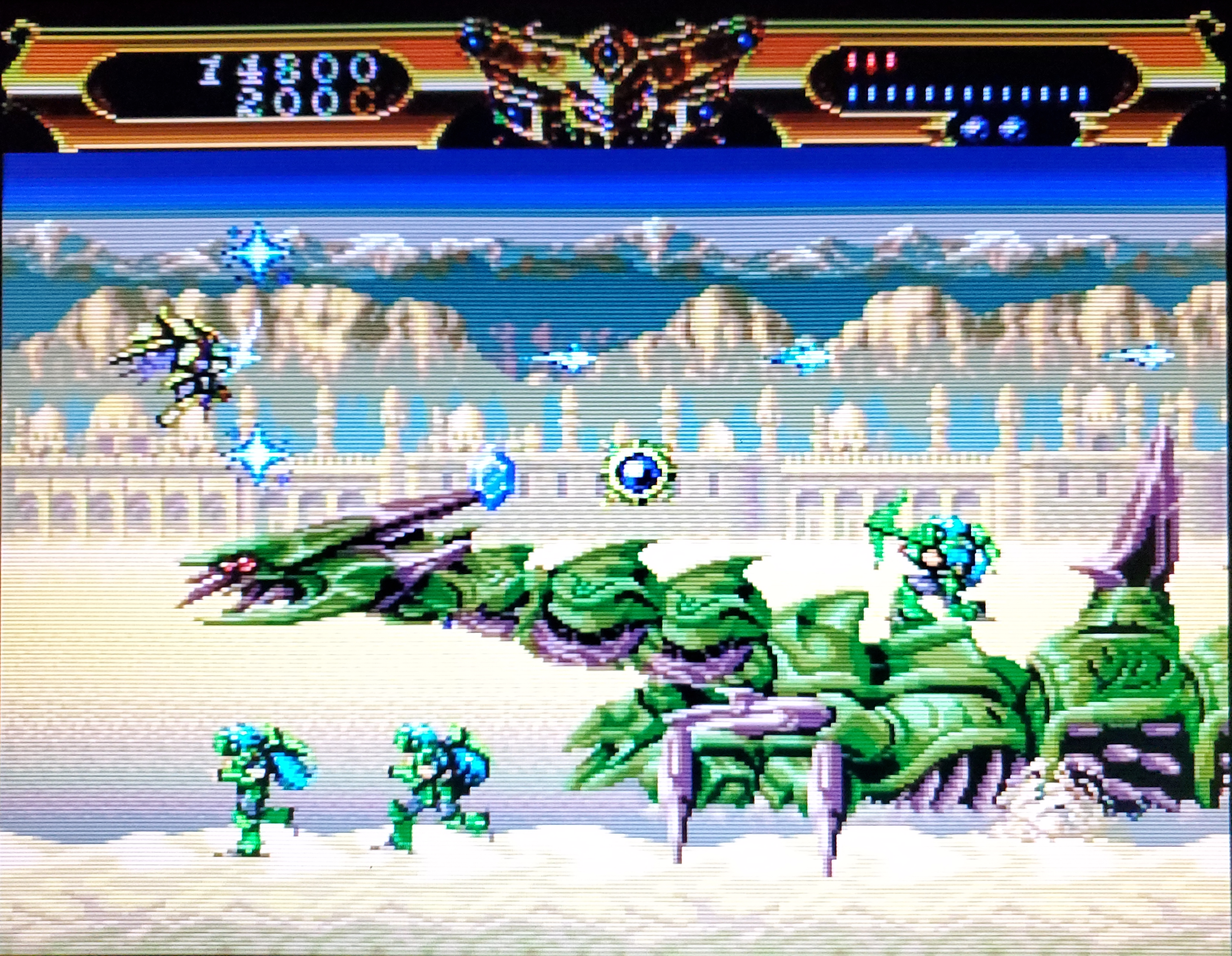
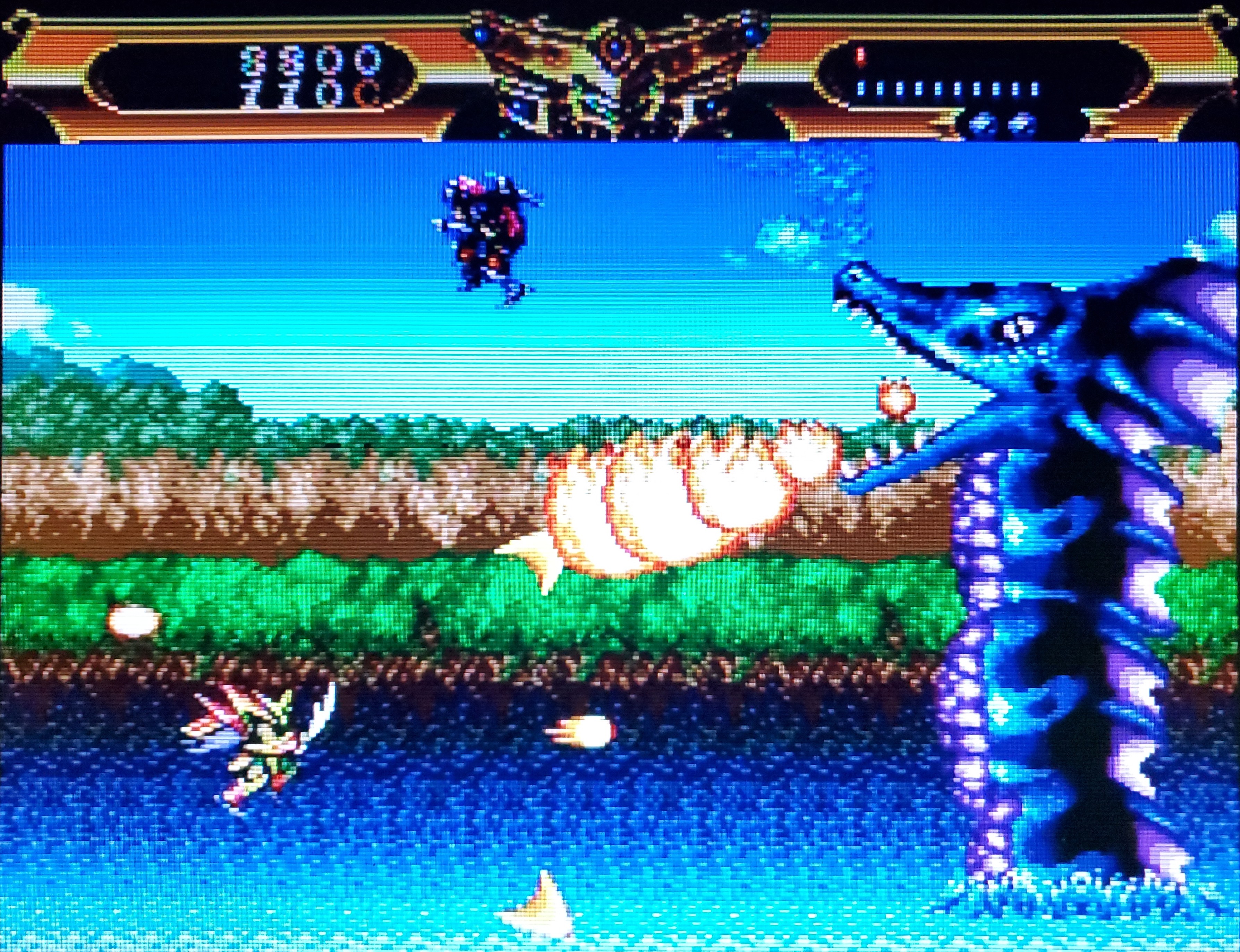
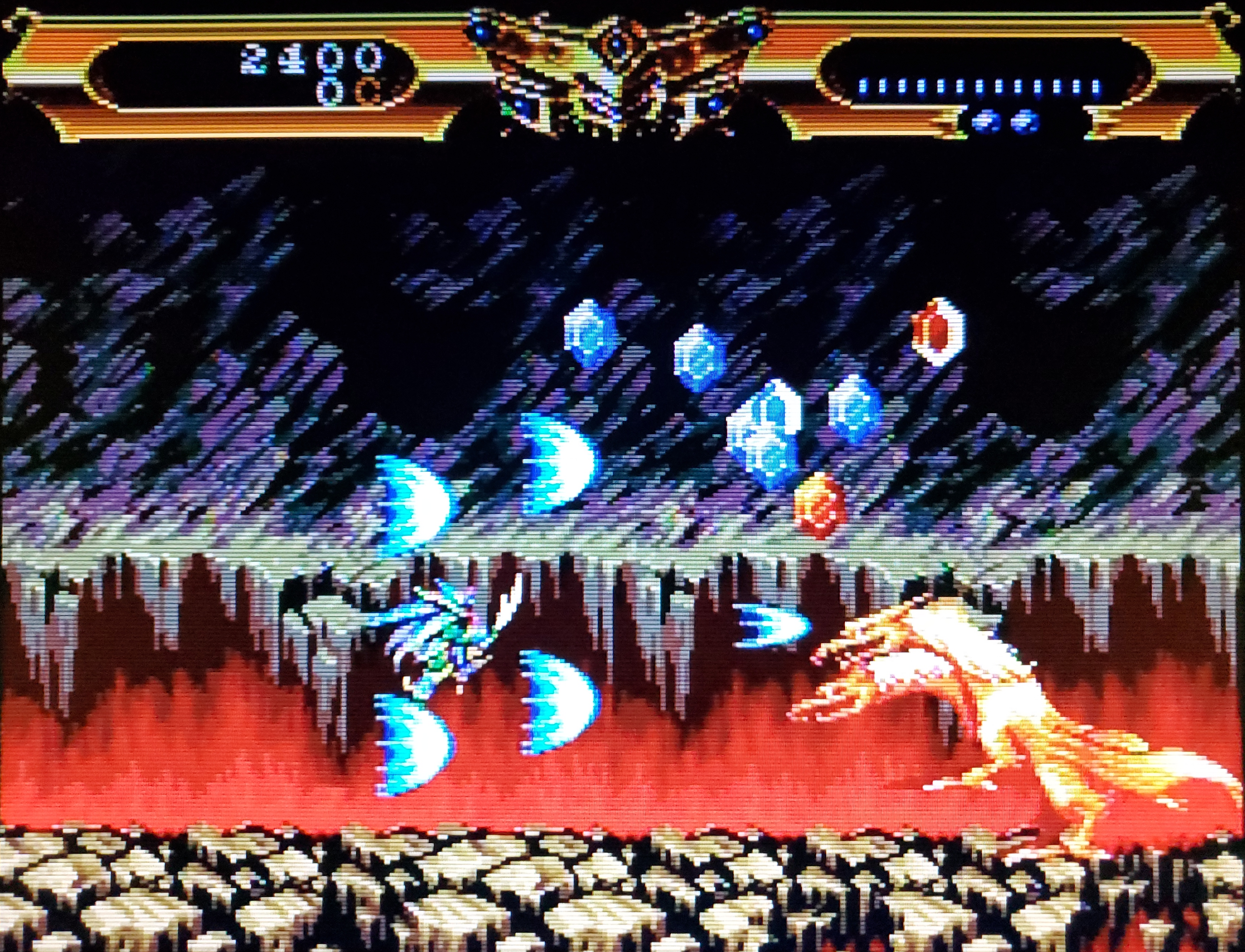
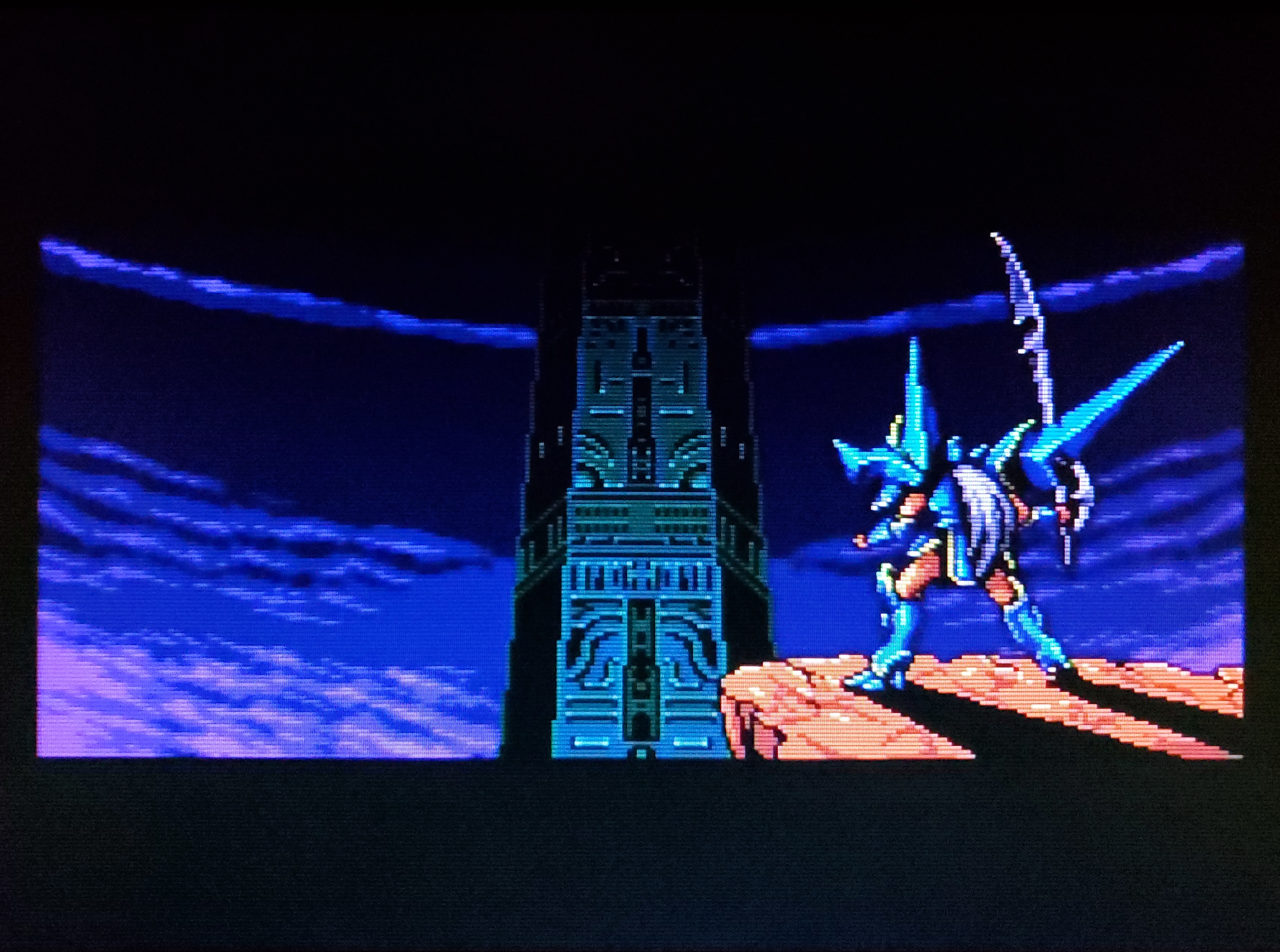
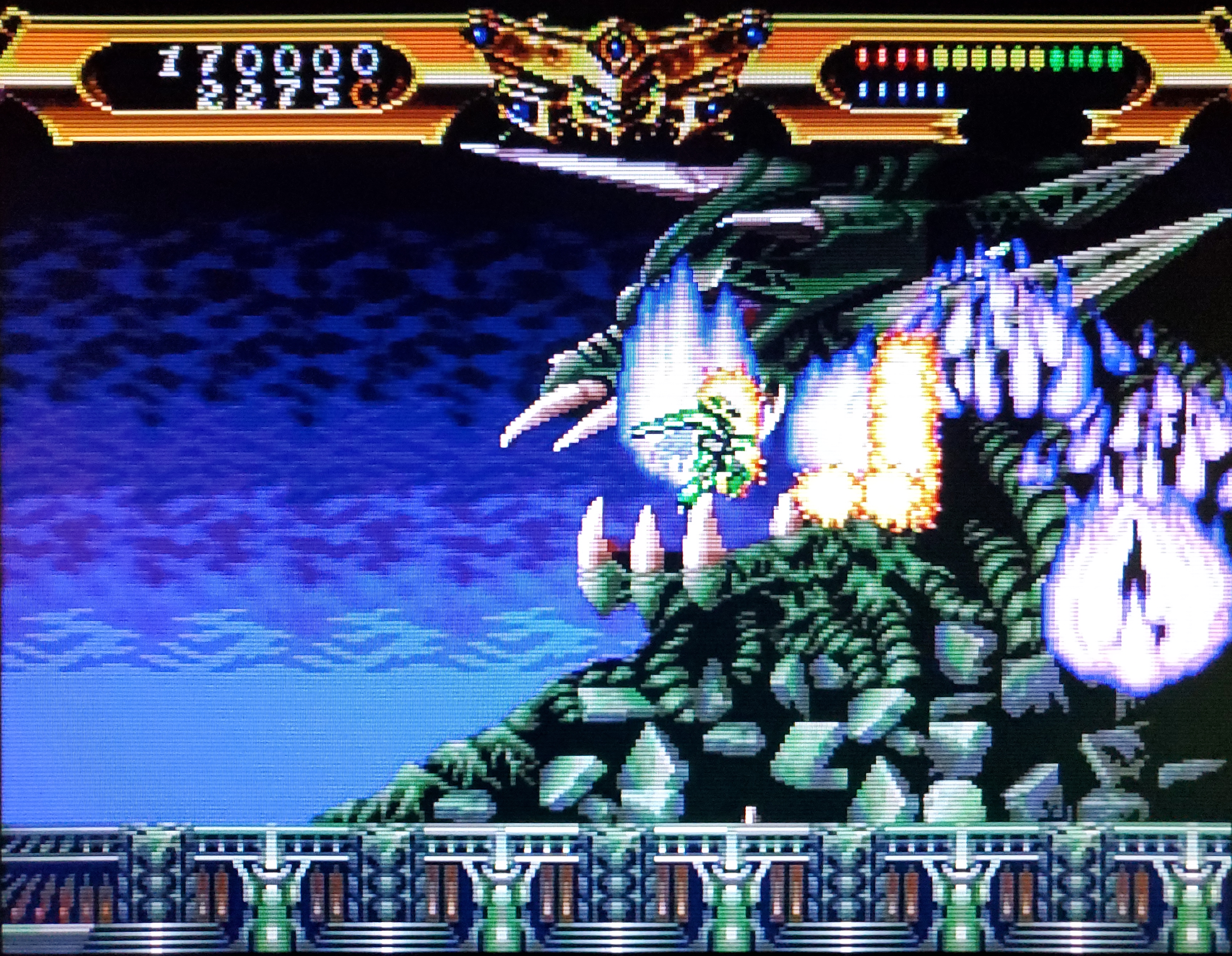
If you followed the gaming press in 1993, you were likely familiar with Lords of Thunder. Magazines staffers practically queued up around the block to heap praise on this most epic of fantasy shooters and its magnificent CD soundtrack. Although it looked like the real deal in print, the only thing I knew for sure was that I’d never get a chance to try it. Nobody in my circle had a TurboGrafx-16 console, never mind one with a CD-ROM drive. Hell, it was a crueler tease than those pricey Neo-Geo cartridges I was always reading about. At least they had arcade versions I could feasibly stumble across someday. Lords of Thunder might as well have required me to insert it into a unicorn.
Times have changed, of course, but even though I can now access the entire TurboGrafx library at will on my flash drive-equipped PC Engine, booting this one up for the first time still sent a chill down my spine. Imagine my delight as I discovered for myself how right-on the ancient magazine reviews were. Lords is every bit the mind-blowing heavy metal roller coaster ride I was promised all those years ago. Hallelujah!
Originally titled Winds of Thunder in Japan, this is theoretically a pseudo-sequel to the previous year’s Gate of Thunder. In reality, the two are about as different as a pair of generally excellent horizontal shooters produced for the same hardware at close to the same time can be. Whereas Gate adopts a standard sci-fi setting and familiar mechanics lifted from the Thunder Force series, Lords does its own thing and is ultimately much more memorable for it.
Most obvious is the shift to a high fantasy aesthetic. You control the mystical warrior Landis as he seeks to deliver the various lands of Mistral from the servants of the reawakened dark god, Zaggart. Mistral’s inhabitants seem to be Spanish speakers, as Landis’ quest takes him to volcanic Llamarada (“blaze”), wintery Helado (“frozen”), verdant Bosque (“forest”), and so on. Either that, or the developers just thought these names sounded exotic and assumed we wouldn’t notice. You decide.
On the gameplay front, Lords eschews Gate’s conventional linear progression in favor of a robust player-driven approach. For starters, you’re free to attempt the first six stages in the order you prefer before moving on to the seventh (and final) one. Once you’ve settled on a destination, you’re taken to another screen to select one of four elemental-themed armors for use in that area. The choice of armor dictates Landis’ primary shot type and secondary super bomb attack. For example, the water armor has the unique ability to generate wave-like projectiles both in front of and behind Landis, making it a ideal pick for beginners. Veterans may prefer the earth armor, which makes up for its weak forward shot with immensely damaging downward and upward blasts that can wipe out the toughest of targets in seconds.
Next, it’s off to the shop, where you can use the gems left behind by defeated enemies as currency to purchase health replenishment, weapon power-ups, bombs, shields, and extra lives. Gathering as many gems as possible and spending them wisely is vital. Landis is fairly resilient for a shooter protagonist. He has a health bar to prevent those dreaded one-hit deaths and he isn’t damaged by contact with innocuous surfaces. That said, it won’t be easy. You’re given a paltry four lives at the outset with which to clear seven stages. None of them have checkpoints and each is a veritable madhouse, with waves of attackers flooding the screen from all sides throughout. If that wasn’t daunting enough, Landis has an extremely short post-hit invincibility period and actually has to pay if he wants to recover lost health and weapon power between levels. In short, cash is your literal lifeblood here.
Once you finish shopping, you’re finally ready for battle. Don’t go thinking you’re done with the decisions yet, though. Lords of Thunder implements multiple risk/reward mechanics that keep combat tense and engaging from moment to moment. I’ve already mentioned one in passing: The gems. The need to accumulate money pushes you to destroy as many foes as possible, as opposed to simply avoiding any that aren’t directly obstructing you. Additionally, merely scoring the kill isn’t sufficient. You still need to fly over to where the vanquished enemy was in order to grab the floating gem before it scrolls off the screen, thereby diverting some of your finite attention away from the remaining swarm. You’re constantly having to reconcile long-term survivability (as represented by your bankroll) with the immediate dangers surrounding you.
Landis’ sword adds another compelling dynamic. This attack dishes out greater damage than the majority of his projectiles. The downside is that he has to be up close and personal with his opponent to use it. Thanks to the aforementioned lack of post-hit invincibility, all it takes is one tiny positioning error or point-blank reprisal to leave him in a world of hurt. Proper sword usage is a cornerstone of skilled play. Sloppy sword usage is a death sentence.
As brilliant as the core action undoubtedly is, it would be a sin to cover Lords of Thunder without giving its graphics and, especially, its music their due. Strong art design, highly detailed pixel work, and striking use of the system’s famously broad color palette earn it a place among the best-looking TurboGrafx releases overall. Locations are visually distinct and there’s a decent variety of enemy types present.
While the graphics are admirable, the score by composer Satoshi Miyashita of the independent game music firm T’s Music is legitimately legendary. It’s pure power metal from start to finish and was virtually unprecedented in the context of video games circa 1993. Oh, we’d heard plenty of metal-inspired chiptunes and MIDI numbers in the likes of MUSHA and Doom. Lords was different, however, owing to the Red Book audio capability of the CD-ROM format itself. If these tracks had lyrics, they could have been something you took home from the record store rather than the electronics aisle. There’s some serious shredding going on here. One piece in particular, the Dezant theme, reminded me of Rainbow’s “Gates of Babylon.” If I’m comparing something favorably to freakin’ Dio era Rainbow, Dear Reader, you can be sure I mean business.
Lest this glowing adulation right on the heels of my love letter to Chrono Trigger last week leave you with the impression I’m going soft, I’ll go ahead and point out that Lords of Thunder isn’t quite perfect. Its biggest missed opportunity by far is the poor armor balancing. The earth and water armors are overwhelmingly powerful once mastered. Fire is adequate. Usable, certainly. By contrast, there’s no use bothering with wind unless you’re actively looking to play with a handicap. It offers no advantages in terms of damage output or area of effect and may as well not be included at all in its current form. I was also slightly disappointed by Landis’ inability to swap armors mid-stage. The potential to change out your main weapon via a pickup would have added yet another welcome tactical facet.
Having now done my due critical duty, it should be clear that any gripes I can muster pale before the glorious white-knuckle frenzy that is Lords of Thunder. This is an absolute must-play for any classic shooter fan. Soaring through the air unleashing waves of elemental death on the demon hoards as a screaming guitar solos your eardrums raw…and it’s somehow even more fun than it sounds!

I really need to play through this version of the game someday. I played through the Sega CD port a long time ago, and really enjoyed it, although I believe it’s even easier than this one. But one thing was a constant – I had the soundtrack in my rotation for a long, long time! I actually like the sound of the Sega CD version a little more (sounds a bit more “clean”), but I know a lot of folks prefer this version’s music. Really, you can’t go wrong with either.
LikeLiked by 1 person
Yeah, basically, the Sega CD version gives you a real post-hit invincibility window. It’s a decision I can’t say I agree with. As brutal as taking multiple hits in a short time can be, it does at least prevent you from damage boosting through bosses. You can “facetank” a lot of them on Sega.
LikeLiked by 1 person